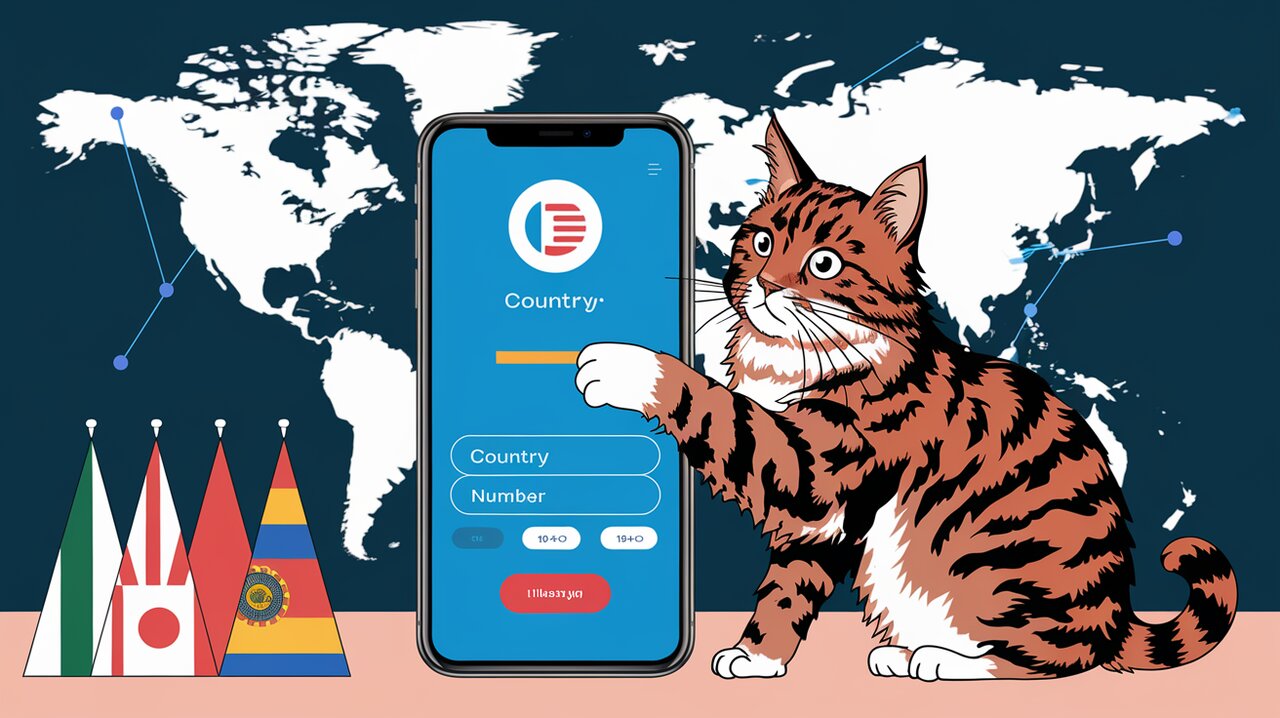
Dialing Up React Magic: Mastering International Phone Inputs with react-intl-tel-input
React developers often face the challenge of creating user-friendly and internationally compatible form inputs. When it comes to phone numbers, the complexity increases due to varying formats across countries. Enter react-intl-tel-input, a powerful library that simplifies the process of implementing international telephone inputs in React applications. Let’s dive into the world of this versatile component and discover how it can elevate your forms to the next level.
Unlocking the Power of react-intl-tel-input
react-intl-tel-input is a React port of the popular jQuery plugin, International Telephone Input. It brings the robust functionality of country-specific phone number formatting and validation to the React ecosystem. This library is perfect for applications that cater to a global audience, ensuring that phone numbers are collected in a standardized and user-friendly manner.
Key Features That Make It Stand Out
Before we delve into the implementation details, let’s explore the standout features that make react-intl-tel-input a go-to choice for developers:
- Country Code Selection: Users can easily choose their country code from a dropdown menu.
- Auto-formatting: Phone numbers are automatically formatted according to the selected country’s conventions.
- Validation: Built-in validation ensures that entered numbers conform to country-specific patterns.
- Responsive Design: The component is fully responsive and works well on various screen sizes.
- Customizable Styling: Easily adapt the input’s appearance to match your application’s design.
Getting Started: Installation and Basic Setup
To begin using react-intl-tel-input in your project, you’ll need to install it via npm or yarn. Let’s walk through the process step by step.
Installation
Open your terminal and run one of the following commands:
npm install react-intl-tel-input
# or
yarn add react-intl-tel-input
Basic Usage
Once installed, you can start using the component in your React application. Here’s a simple example to get you started:
import React from 'react';
import IntlTelInput from 'react-intl-tel-input';
import 'react-intl-tel-input/dist/main.css';
const PhoneInputComponent = () => {
return (
<IntlTelInput
containerClassName="intl-tel-input"
inputClassName="form-control"
/>
);
};
export default PhoneInputComponent;
This basic setup will render a phone input field with country selection capabilities. The containerClassName and inputClassName props allow you to apply custom styles to the component.
Advanced Usage and Customization
react-intl-tel-input offers a wide range of props for customization and advanced functionality. Let’s explore some of these options to tailor the component to your specific needs.
Handling Input Changes
To capture the entered phone number and selected country, you can use the onPhoneNumberChange callback:
const handlePhoneNumberChange = (
isValid: boolean,
value: string,
selectedCountryData: any,
fullNumber: string,
extension: string
) => {
console.log('Phone number:', fullNumber);
console.log('Is valid:', isValid);
console.log('Selected country:', selectedCountryData.name);
};
<IntlTelInput
onPhoneNumberChange={handlePhoneNumberChange}
// ... other props
/>
Customizing the Initial Country
You can set the initial country for the input using the defaultCountry prop:
<IntlTelInput
defaultCountry={'us'}
// ... other props
/>
Enabling Auto Country Detection
To automatically detect the user’s country based on their IP address, you can use the geoIpLookup prop:
const geoIpLookup = (callback: (countryCode: string) => void) => {
fetch('https://ipapi.co/json')
.then(res => res.json())
.then(data => callback(data.country_code))
.catch(() => callback(''));
};
<IntlTelInput
geoIpLookup={geoIpLookup}
// ... other props
/>
Customizing the Allowed Countries
You can limit the available countries in the dropdown using the onlyCountries prop:
<IntlTelInput
onlyCountries={['us', 'gb', 'ca', 'au']}
// ... other props
/>
Integrating with Form Libraries
react-intl-tel-input can be easily integrated with popular form libraries like Formik or React Hook Form. Here’s a quick example using React Hook Form:
import React from 'react';
import { useForm, Controller } from 'react-hook-form';
import IntlTelInput from 'react-intl-tel-input';
const PhoneForm = () => {
const { control, handleSubmit } = useForm();
const onSubmit = (data) => {
console.log(data);
};
return (
<form onSubmit={handleSubmit(onSubmit)}>
<Controller
name="phone"
control={control}
render={({ field }) => (
<IntlTelInput
{...field}
containerClassName="intl-tel-input"
inputClassName="form-control"
/>
)}
/>
<button type="submit">Submit</button>
</form>
);
};
export default PhoneForm;
Conclusion: Elevating Your React Forms
react-intl-tel-input is a powerful tool for React developers looking to implement robust, user-friendly international phone number inputs. Its extensive customization options, built-in validation, and ease of integration make it an excellent choice for applications catering to a global audience.
By incorporating this library into your projects, you can significantly enhance the user experience of your forms while ensuring accurate and standardized phone number collection. Whether you’re building a contact form, user registration system, or any application that requires phone number input, react-intl-tel-input provides the functionality you need to create polished, professional interfaces.
As you continue to explore React libraries, you might also be interested in other form-related components. Check out our articles on react-select for React JS for advanced dropdown functionality, or react-hook-form for efficient form management. These libraries can complement react-intl-tel-input and further enhance your form-building toolkit.
Happy coding, and may your international phone inputs always be on point!
